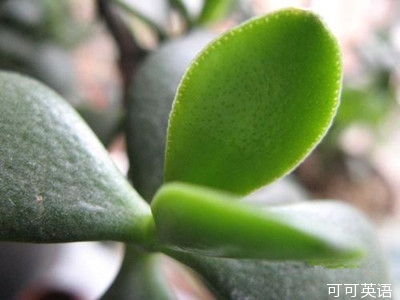科學(xué)技術(shù)
Robot plants Putting down roots
植物機器人 落地生根
A robotic model of what plants get up to under the surface
模仿植物根部工作的機器人模型
PEOPLE often forget, when looking at a garden, meadow or forest, that half of almost every plant in it is underground.
在人們望著花園,草原或者森林時,常常會忽略一點幾乎所有生長于斯的植物的身體中有一半都長于地下。
Stems, leaves and flowers are pretty.
莖干,葉片和花朵都很美麗,
 But plants' roots, though ugly and invisible, are probably their smartest parts.
But plants' roots, though ugly and invisible, are probably their smartest parts.
但是既不露面又不好看的根部卻很可能是植物身上最有智慧的部分。
They collect information on the physical properties and chemical composition of the soil they are growing through
它們在土壤中成長,并搜集土壤的物理性質(zhì)及化學(xué)組分的信息,
and use that to decide in which direction to continue growing.
然后決定新的生長方向。
They can pierce the ground employing only a fraction of the energy that worms, moles or man-made drills consume.
它們只耗用一點能量便能在土地中鉆行,僅相當(dāng)于蠕蟲,鼴鼠或人造鉆機所耗能量的一小部分。
Plant roots are thus the most efficient systems known for underground exploration.
因此植物的根可說是地下勘探中最有效率的系統(tǒng)。
But not, perhaps, for much longer.
但或許這個名頭保持不了多久了。
Researchers working on the Plantoid project, led by Barbara Mazzolai of the Italian Institute of Technology, in Pontedera,
參與植物機器人計劃的研究人員想要開發(fā)出至少與真正的根不相上下的機器根,
hope to develop robot plant roots that will be as good as the real things, if not better.
該計劃的負責(zé)人是意大利理工學(xué)院的芭芭拉·瑪佐萊。
In doing so, they seek to understand how real roots work and also to devise machines that might monitor soil pollution, prospect for minerals and look for water.
在開發(fā)過程中,研究人員不僅要設(shè)法了解真正的根是如何工作的,還力圖設(shè)計處可以監(jiān)測土壤污染,勘探礦物及尋找水源的設(shè)備。
The plantoid, of which Dr Mazzolai plans to demonstrate a partial prototype on July 29th at a conference at the Natural History Museum in London, will have a central stem containing a reservoir of liquid plastic of a sort that can be frozen by ultraviolet light.
瑪佐萊博士計劃在7月29日于倫敦自然歷史博物館召開的會議上演示植物機器人非完全體原型,該機器人有一條主干,里面有一個裝有液態(tài)塑料的儲液囊,這種液態(tài)塑料受到紫外線照射時將會凝固。
Half a dozen cylindrical roots will branch off this stem, and the plastic will flow through these from the reservoir to the tip.
主干上分出六條柱狀根,液態(tài)塑料從儲液囊中流過這些柱狀根,直至其頂端。
As in a real root, the tip will be a specialised structure.
和真的根一樣,柱狀根的頂端是一種特別的結(jié)構(gòu)。
Instead of being a cone containing a meristem it will be a cone containing a motor, a light-emitting diode and a battery.
兩者都是圓錐結(jié)構(gòu),不過前者里面有一個分生組織,而后者里面是電機,發(fā)光二極管和電池各一個。
The motor will suck liquid plastic through the root and push it to the periphery of the cone.
電機將液態(tài)塑料吸入根部再將之推至圓錐體表層。
Once there, the liquid will be solidified by ultraviolet rays from the diode, extending the cylinder and forcing the cone farther into the soil.
液態(tài)塑料到達該位置后馬上會因二極管發(fā)出的紫外線照射凝固,使圓柱體增長,促使錐體在土壤中更進一步。
As in real life, the gentle but relentless pressure of the root's growth should be enough to make it advance through the soil, fractions of a millimetre at a time.
對真正的根來說,由根部生長帶來的和緩但從不間斷的壓力足以使之在土壤中前進,一次能前進幾絲米。
The researchers expect their prototypical robotic roots to be able to penetrate up to a metre of real soil.
研究人員希望自己的機器根原型最多可穿透1米深的真正土壤。
The direction of growth is controlled by a material known as an electro-rheological fluid, which is also stored in the cone.
生長方向是由一種叫做電力流變液的物質(zhì)控制的,該物質(zhì)也儲存在圓錐中。
Such fluids become more viscous when an electric current is applied to them, and changing the viscosity on one side of a root but not the other,
當(dāng)有電流通過時,該液體會變得更加粘稠,通過電池提供的電流改變根部一側(cè)的粘稠度,而另一側(cè)不變,
using current from the battery, causes the direction of growth to vary.
從而改變生長的方向。
One thing missing from the prototypes is a control system that responds to the root's environment.
該原型中缺少一套可以對根的外部環(huán)境產(chǎn)生響應(yīng)的控制系統(tǒng)。
The plan is to fit the next generation of cones with sensors that look for whatever the root is designed to find, and control its growth accordingly.
計劃是在下一代的圓錐體中裝上傳感器,用以根據(jù)機器根的設(shè)計目的進行勘探,并相應(yīng)地控制其生長方向。
Writing the software for these sensors may illuminate how real roots work.
要為這些傳感器編寫軟件,先得弄明白真正的根的工作原理。
According to Dr Mazzolai, the first person to ask about that was Charles Darwin.
據(jù)瑪佐萊博士稱,第一個論及此事的人是查爾斯·達爾文。
He could not come up with an answer, and 130 years later no one else has either.
達爾文沒有找到答案,130年以后也還沒人能找到這個答案。
 But plants' roots, though ugly and invisible, are probably their smartest parts.
But plants' roots, though ugly and invisible, are probably their smartest parts.
 But plants' roots, though ugly and invisible, are probably their smartest parts.
But plants' roots, though ugly and invisible, are probably their smartest parts.